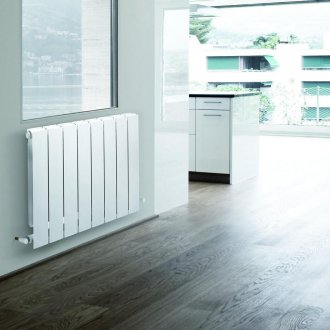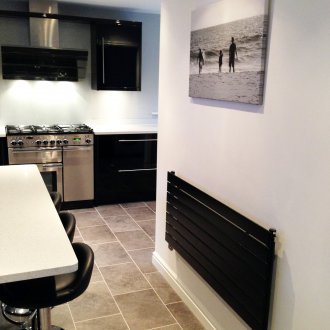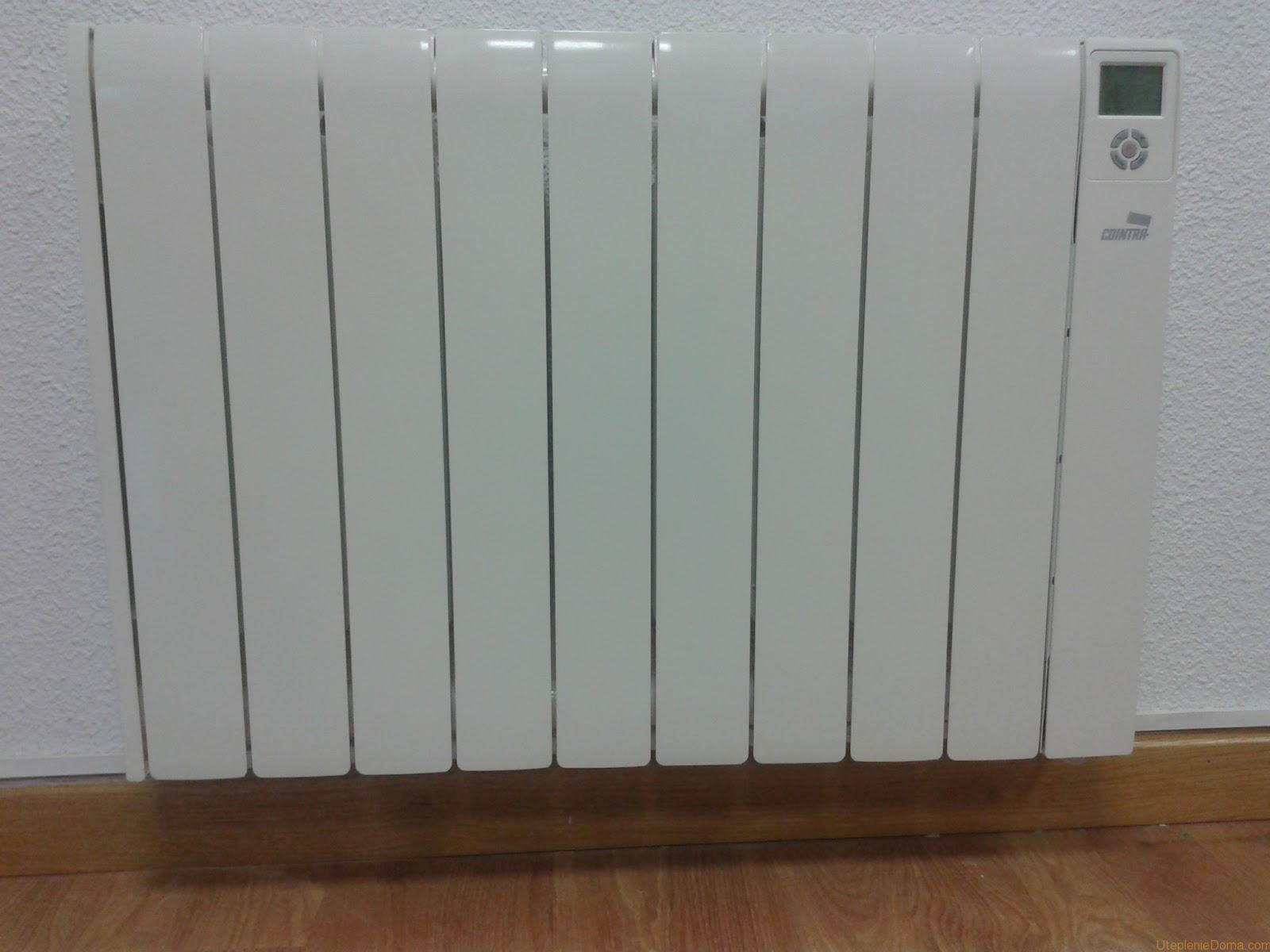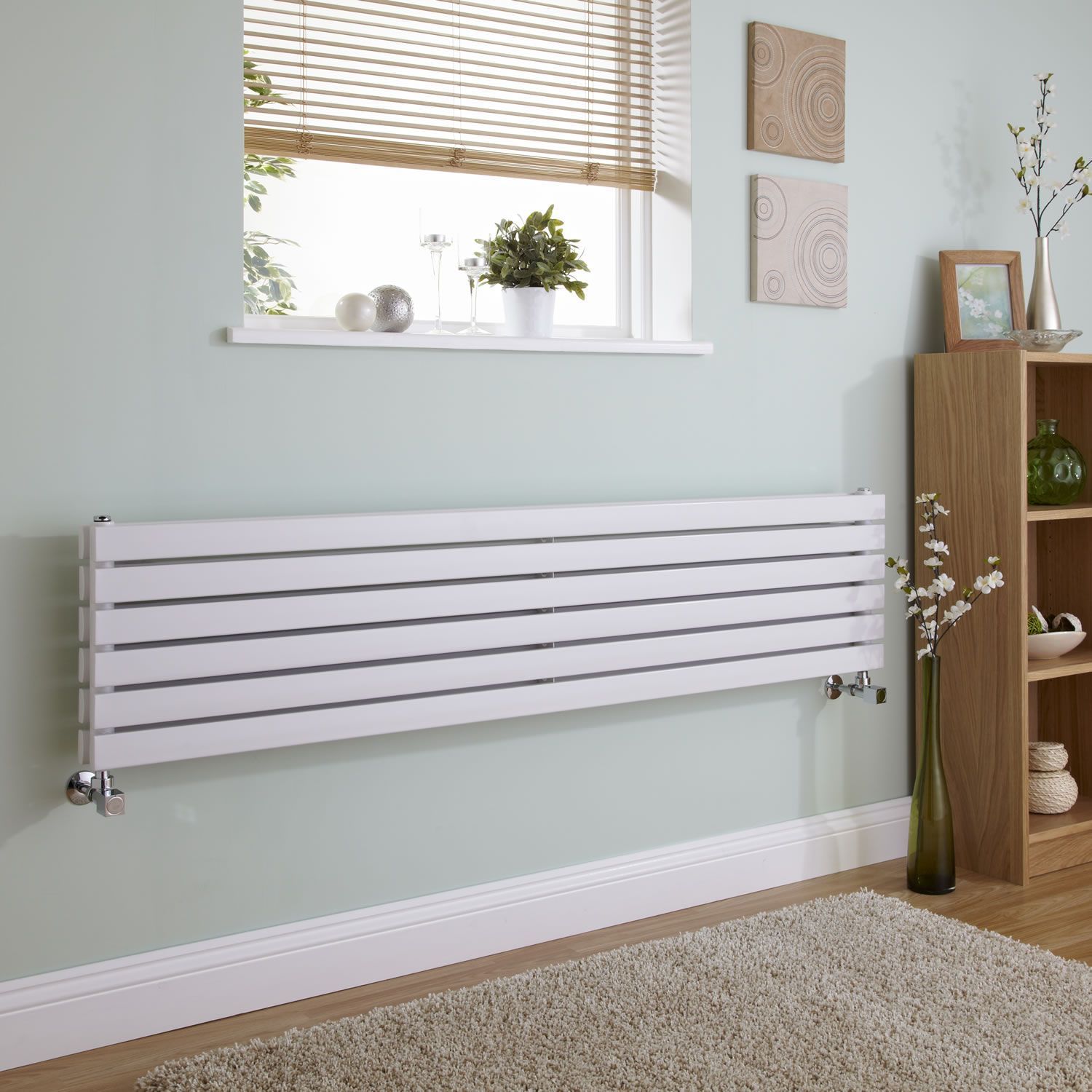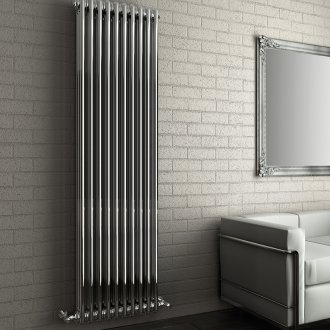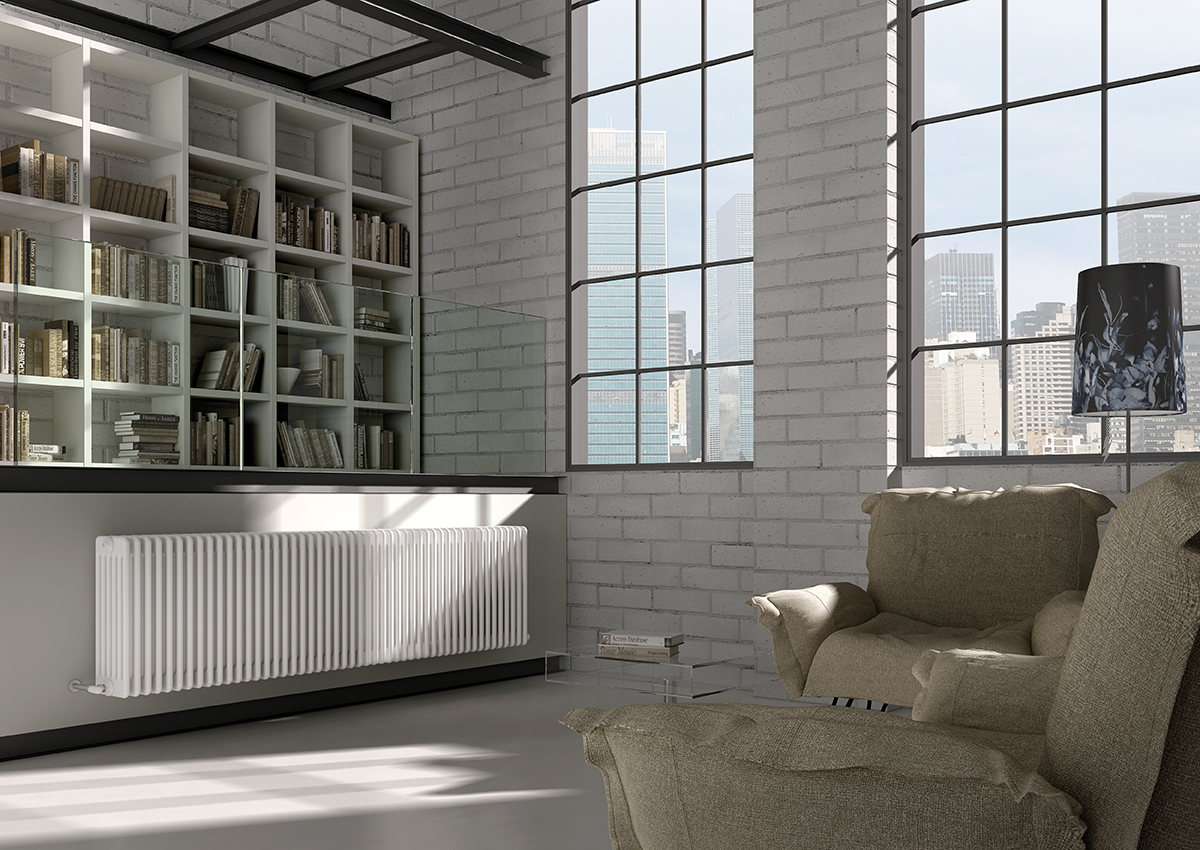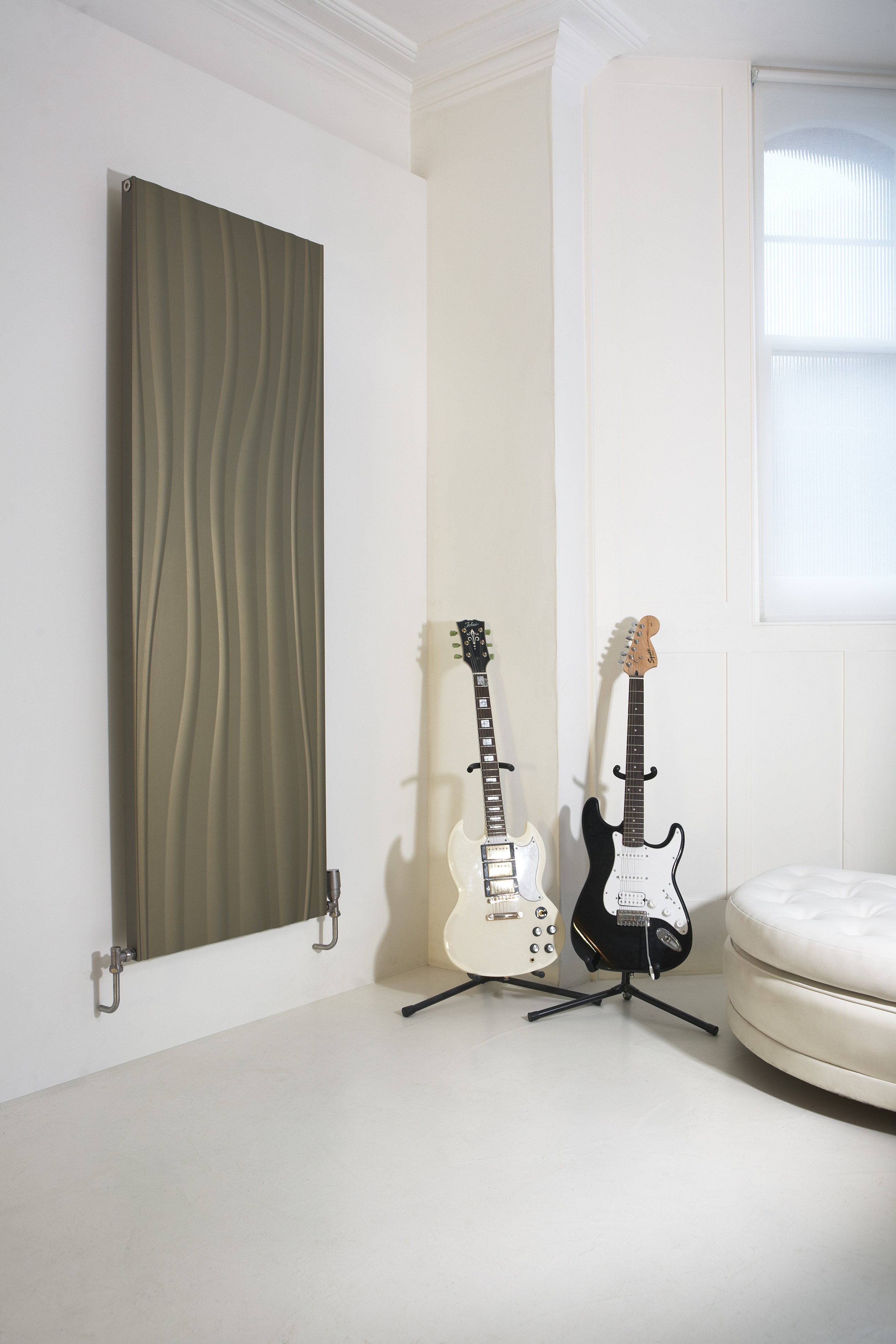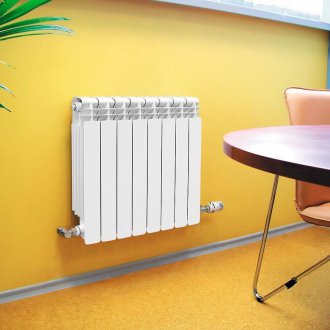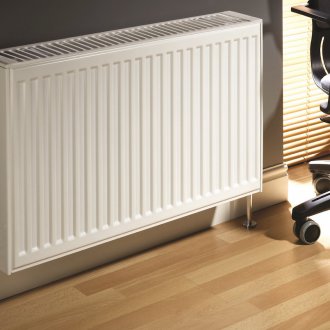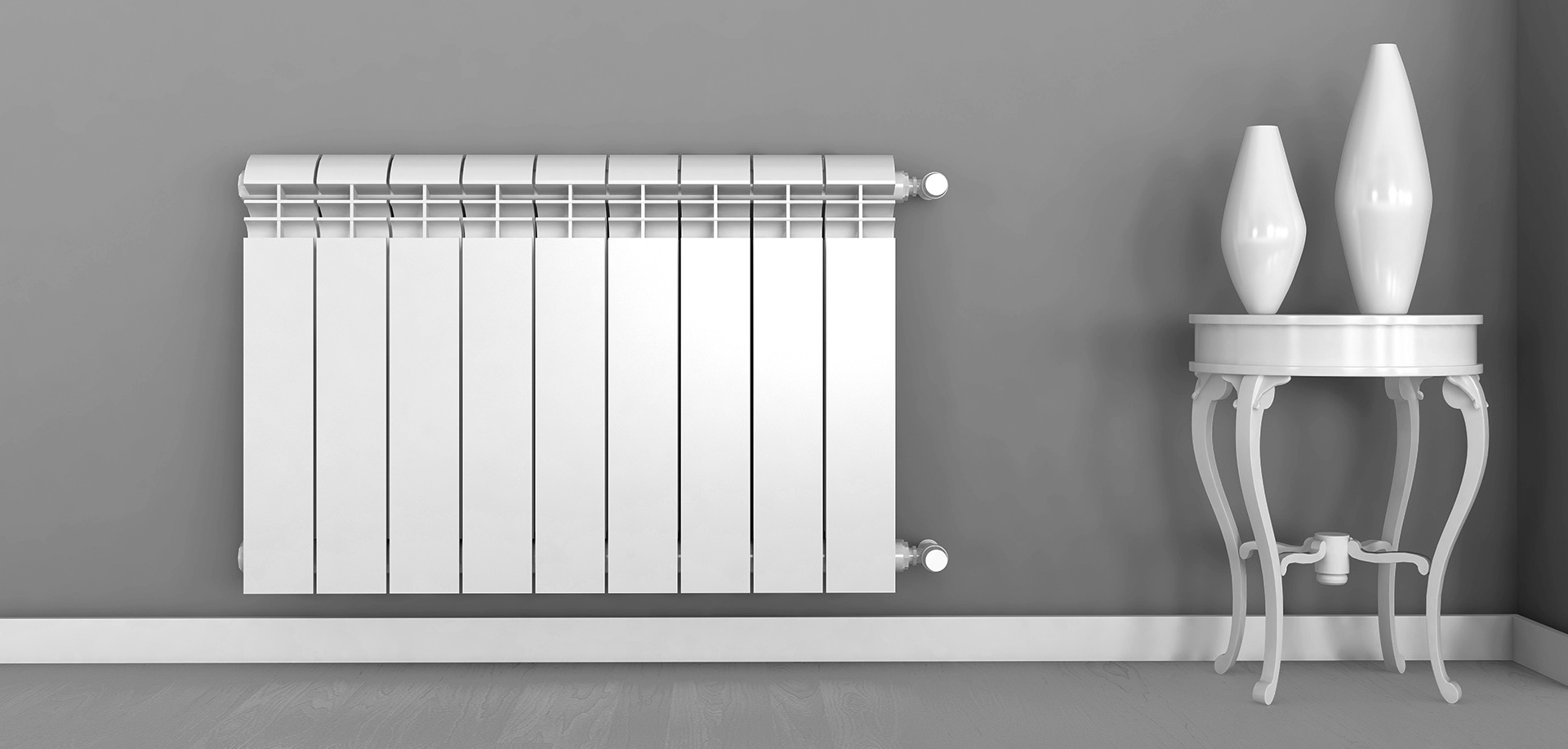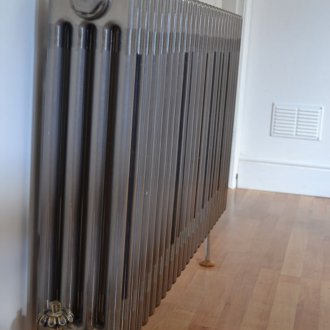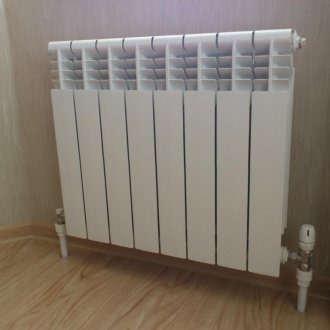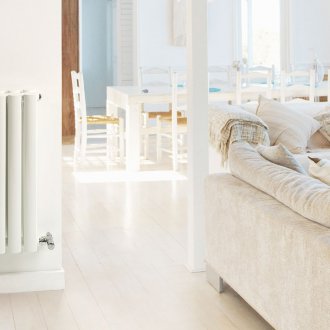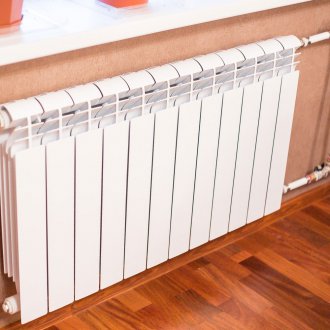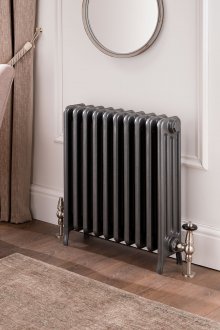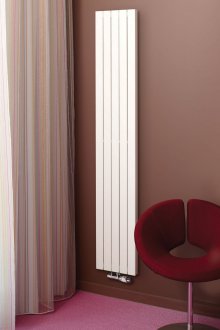Bimetal radiators: two metals for better quality (20 photos)
Content
Bimetal heating radiators are one of the most popular heating options for any room. Their main difference from analogues is their high thermal conductivity, durability and reliability. This was achieved by a combination of two metals - steel for the inner case and aluminum for the outer. These materials were not chosen by chance: steel is very resistant to high temperatures and aggressive environments, and aluminum quickly heats up and gives off heat well. The result is high-quality heating radiators with good technical characteristics, a pleasant appearance and an affordable price.
Design features
Most often, bimetallic sectional radiators are found, consisting of several identical sections arranged vertically. Each section consists of an aluminum casing with a steel pipe inside, into which the coolant enters. In addition, at the top and bottom, all sections are connected into one structure by horizontal steel pipes.
There are also monolithic bimetallic radiators that do not have connecting elements (nipples). They are a single steel manifold placed in an aluminum casing. This design guarantees the resistance of pipes to high pressure and water hammer, eliminates the possibility of leakage, has a long service life. However, the weight of monolithic radiators is greater, the price is also higher than that of sectional ones, and in the event of a breakdown, the battery will have to be completely replaced (while sectional analogues only need to replace the damaged section or connecting element).
Calculation of the number of sections of the radiator
Bimetal radiators are suitable for both residential and non-residential premises, they can be connected to a central and autonomous heating system. To create a comfortable room temperature, it is important to choose the right number of sections and know how to calculate them. The calculation of bimetallic radiators is based on the parameters of the room area and the power of one section (it is indicated in the accompanying documentation). For the calculation, the following formula is used: A = B * 100 / C, where A is the number of sections, B is the area of the room, C is the power of one section of the radiator.
However, in addition to calculating the area, it is necessary to take into account the features of the room, namely: the number and size of windows, a balcony (glazed or not glazed), the presence of external walls, the number of storeys of the house, etc. Given these factors, you should use increasing factors and multiply the result by 1 , 1, 1,2, 1,3, etc. Round the resulting numbers up.
Advantages and disadvantages of bimetal radiators
As with all types of collectors, bimetallic devices have both pros and cons. Their advantages include:
- Universality, thanks to which it is possible to mount bimetallic batteries in any house or premises and connect to any coolant.
- The service life of sectional models is at least 20 years, and monolithic structures work up to 50 years.
- High heat dissipation ensures fast heating of the room and maintaining a comfortable temperature.
- The use of steel tubular batteries guarantees resistance to high pressure and temperature.
- The weight of the radiator allows installation by one person.
It is also necessary to take into account the fact that bimetallic models have a neat shape with rounded edges. This reduces the risk of injury when hitting the battery and adds aesthetics to the design.
If we talk about the shortcomings of bimetallic radiators, then the following points should be noted:
- The use of poor quality coolant reduces the life of the radiator. In addition, this causes clogging of the tubular elements and corrosion.
- In sectional models, leaks are possible due to poor-quality connecting elements (nipples and gaskets).
- The cost of bimetallic models is higher than cast iron, steel and aluminum.
Given the shortcomings of their products, manufacturers are working to improve its quality and try to eliminate or minimize problems encountered during operation.
Major manufacturers
The most famous and popular are Italian, German, Russian and Chinese firms, it can be difficult to choose among them. The rating of bimetallic radiators is unanimously led by the Italian companies GLOBAL Radiatori, ROYAL Thermo, SIRA Industrie and GRANDINI. The second place is occupied by the German company TENRAD, the third is the domestic manufacturer RIFAR. The Chinese brand GORDI closes the rating of bimetal heating radiators.
In addition to the above, other manufacturers are present on the market, however, these brands show the best quality and durability parameters.
Which bimetallic radiators to choose: tips
Before buying, you should carefully study the model you like: make a visual inspection of it, try the metal for bending and strength, study the technical characteristics displayed in the accompanying documentation.
During a visual inspection, you need to pay attention to the size of the sections of the bimetallic radiator. The optimal width and depth of the sections is 80 mm, but depending on the size and type of the room in which the radiator will be installed, you can choose bimetal heating radiators with smaller parameters. The main thing is to correctly calculate the number of sections. It is more critical to approach the thickness of the section. For high-quality models, it is at least 1 mm. There are models with a thickness of 0.8 mm or less - such an indicator is allowed for production, but due to it, the strength of the case and heat transfer are reduced. In general, the smaller the heating radiators for an apartment, the slower and weaker they heat the air, so a powerful collector should have either impressive dimensions or a sufficient number of sections.
Choosing a radiator, you need to conduct small mechanical tests: try bending the section, check the nipple for softness, assess the elasticity of the gasket. If even small chips are visible on the collector, then this indicates a low quality of aluminum and it is better not to buy such radiators.
From the technical characteristics displayed in the product passport, it is important to pay attention to the test pressure indicator - it is responsible for the resistance of the battery to high pressure and water hammer. You also need to look at the warranty period - if it is 1-2 years, this is an occasion to think about the quality of the device.
Installation of bimetallic radiators
As mentioned above, the installation of bimetallic radiators can be carried out in premises of any purpose with connection to any heating system. The installation process in a private house, and in an apartment, and in a non-residential building is the same.
At the first stage, the old batteries are removed, and a place is prepared for new ones.Markings are made for the brackets, the position of the collector is calculated and the eyeliner is tried on. The recommended distance from the floor to the radiator is from 6 to 12 cm, from the radiator to the windowsill - at least 5 cm, from the back of the collector to the wall - at least 2 cm.
At the second stage, direct installation is carried out: first, brackets are installed in the wall, then the collector itself is mounted on them. Installation is completed by connecting the radiator pipes to the pipes.
There are several schemes for connecting a bimetal heating radiator to pipes. The most common option that it is recommended to choose for an apartment is a one-way (or side) connection scheme. In this case, the inlet pipe is connected to the upper branch pipe, and the outlet pipe to the lower branch, and all this on one side of the battery. With this scheme, heat loss is minimal (up to 2%).
The lower connection diagram is characterized in that both pipes are located at the bottom. This option is justified for certain features of the room, but the heat loss in this case reaches 12%.
Another diagonal scheme is suitable mainly for multi-section collectors. It provides for the connection of the inlet pipe at the top of the radiator on the one hand, and the connection of the outlet pipe at the bottom of the radiator on the other side.
After all stages of installation on a radiator, a valve opens for the receipt of coolant. As a rule, installation is carried out by experienced professionals with the necessary equipment. However, if you have the equipment, experience and knowledge, you can install the radiator yourself.
Use in the interior
The choice of bimetallic radiators is largely due to the fact that the size and number of sections can be varied in any way, choosing the best option for a particular room. For example, for a country house with high windows, shortened models with a height of 40 cm are suitable: due to their compact dimensions, they easily fit into a limited space.
If you select a model for a spacious living room of an ordinary apartment building, it is better to choose a collector with sections 50-60 cm high in the amount of 12-14 pieces. The exact number of sections must be calculated based on the area of the room and the technical characteristics of the radiator.
One of the advantages of bimetallic models is that they can be painted in different colors, but only with special paints. Having shown the imagination and talent of the designer, from an ordinary battery, you can create an original element of the interior that best meets the style of the room.
In order for the battery to serve for many years and not cause problems, it is important to correctly calculate the power of the radiator and decide which model of company is best to buy. Before choosing bimetallic radiators, you need to study the documentation and carefully inspect the product - in this case, the likelihood of buying low-quality goods is reduced. Bimetal radiators are versatile and therefore perfect for any purpose.
